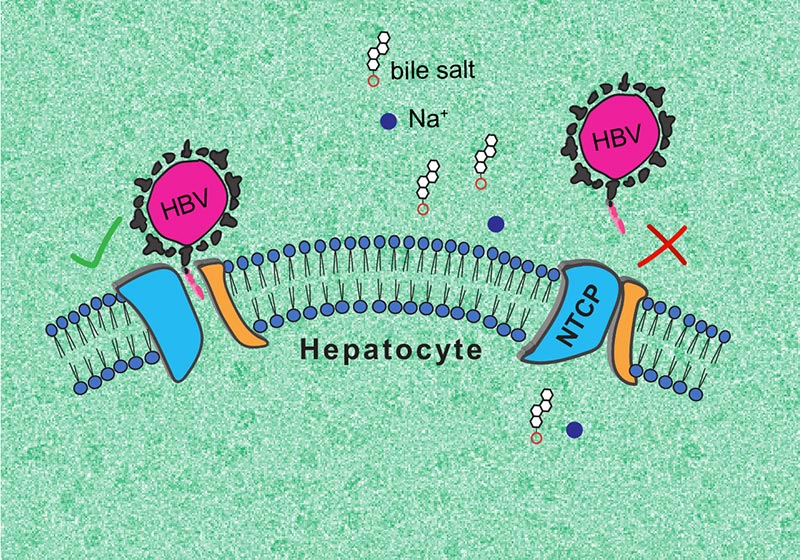
Illustration of the 2 3D conformations adopted by NTCPs. Left: ‘open’ conformation to which HBV and HDV can bind. Proper: ‘closed’ conformation that forestalls recognition by the viruses. Credit score: © Kapil Goutam/Nicolas Reyes/CNRS
Although it's a vital gateway to the liver, NTCP had not been properly described prior to now. Na+-taurocholate co-transporting polypeptide (NTCP) is a protein situated solely within the membrane of liver cells that permits recycling of bile acid molecules. It's also the mobile receptor of human hepatitis B and D viruses (HBV/HDV). A greater understanding of NTCP might allow the event of remedies particularly designed for the liver, and to combat HBV and HDV an infection.
NTCP is a tough protein to check. It weighs solely 38 kilodaltons (kDa)[1], whereas cryo-electron microscopy, the know-how used to check any such molecule, solely works for molecules weighing greater than 50 kDA. The problem was due to this fact to “enlarge” and stabilize it.
To do that, groups from French and Belgian laboratories[2] developed and examined a set of antibody fragments concentrating on NTCP. The 3D buildings of the ensuing complexes had been decided utilizing cryo-electron microscopy, and completely different antibody fragments stabilized and revealed a number of types of NTCP.
The crew of scientists was in a position to describe two important NTCP conformations: one by which the protein opens a big membrane pore to bile salts, to which HBV and HDV can bind, and a second, ‘closed’ conformation, that forestalls recognition by the viruses.
The primary, ‘open’ conformation may be very stunning, as no different identified molecular transporter types such a ‘vast open’ pore. In flip, the second conformation might assist in discovering antiviral molecules that forestall HBV and HDV an infection. The crew of researchers intends to proceed its work to totally elucidate the functioning of NTCP.
Reference: “Structural foundation of sodium-dependent bile salt uptake into the liver” 11 Could 2022, Nature.
DOI: 10.1038/s41586-022-04723-z
Notes
- A kilodalton is an atomic mass unit equal to 1,000 daltons. One dalton is one-twelfth the mass of a carbon-12 atom (the mass of a hydrogen atom, roughly).
- The research was performed by groups on the MPF Laboratory (Microbiologie fondamentale et pathogénicité) (CNRS/College of Bordeaux), the Membrane Protein Mechanisms Unit on the Institut Pasteur, and the VIB-VUB Middle for Structural Biology. This research was supported by the ANRS Rising Infectious Ailments Program, amongst others.
0 Response to "3D Structure of the “Gateway” to the Liver Could Enable Treatments To Fight Hepatitis"
Posting Komentar